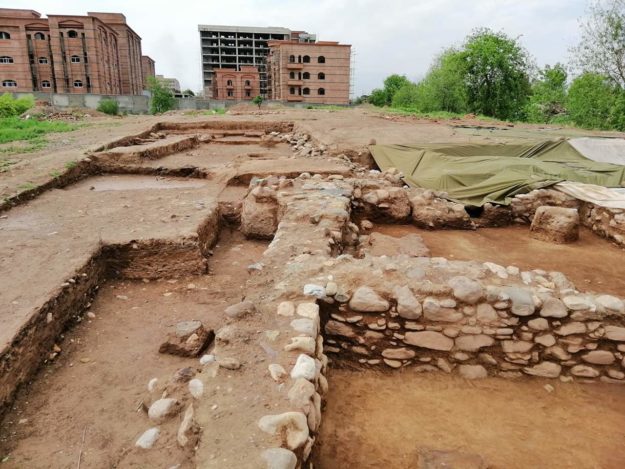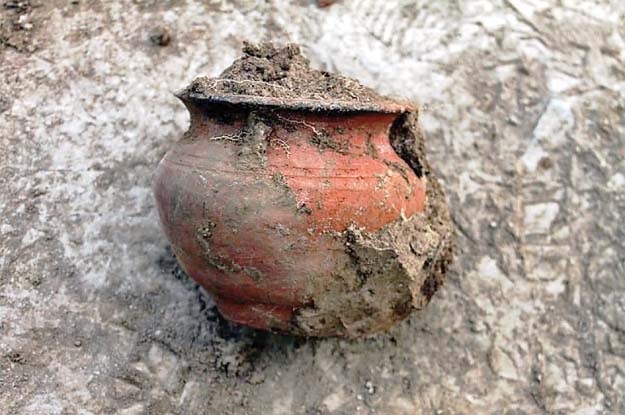Archaeologists in Khyber Pakhtunkhwa have discovered 2,000 years-old ancient metal artefacts from Peshawar’s Hayatabad neighbourhood.
The Archeology Department of the University of Peshawar in collaboration with the K-P Archeology Department had been excavating the Hayatabad Phase V site for the last three years.
The artefacts discovered include utensils, tools, and industrial items. The remains were traced back to the Sateen tribe, which dates back to the 2ndcentury BC.
The provincial authorities are reviewing the site for restoration and the decision to convert the site into a museum will be taken at a later date.

2,000 years-old relics found in Peshawar. PHOTO: EXPRESS
Earlier this year, Chinese archaeologists uncovered artefacts dating as far back as 1700 BC near Khanpur. The discovery suggested that there was a civilisation in the area long before the Gandhara civilisation.
The artefacts, including pottery, remains of metallic tools, and stone items, point to a link with Harappa and Moen Jo Daro civilisations – the two cradles of Indus Valley civilisation.
Chinese archaeologists have uncovered some artefacts dating as far back as 1700 BC near Khanpur. It suggests that there was a civilisation in this area long before the Gandhara civilisation.

Uncovering history: 4,000-year-old artefacts found near Khanpur
The relics, including pottery, remains of metallic tools, and stone items, point to a link with Harappa and Moen Jo Daro civilisations – the two cradles of Indus Valley civilisation.
According to sources, the discovery was a joint effort of students from three Chinese universities along with the Department of Archaeology who have been excavating a historical site near Bhaloot in Khanpur for a while.
Nasir Khan, an official of the Directorate of Archaeology and Museums, said that they had discovered a large number of pots, metal and stone tools during the excavation.
He added that the best part was that most of the relics had been recovered undamaged.

Nasir hoped that research on these relics would help provide clues to the civilisation which lived in this area over a millennium ago — even before the advent of Gandhara Civilisation.
The official said that the discovery was the result of the strengthening cultural ties between Pakistan and China in the wake of China-Pakistan Economic Corridor (CPEC).
He added that it was due to an agreement for cooperation that Chinese archaeological experts had worked with the Khyber-Pakhtunkhwa government to discover the relics.
“This discovery would not only open new chapters in history but would further help in understanding ancient civilisations,” he added.
He said the discovered antiquities would be displayed in a museum for general public.
Tags:
Archaeology

